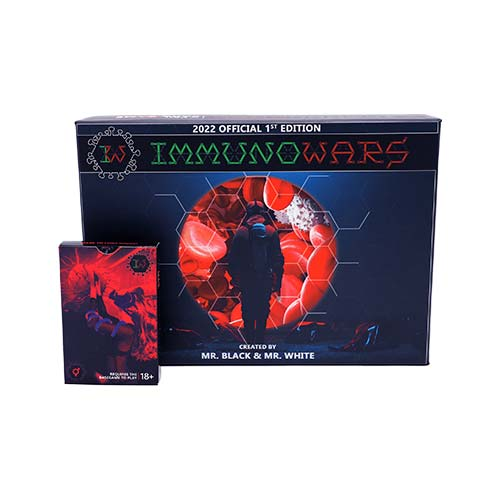Author: Liliana Sánchez Rocha
Read time: 6 minutes
Deep within you, an invisible but fascinating battle might be unleashing at this very right moment. While you go about your day, an elite team of immune warriors, better known as “T cells” might be going on a dangerous mission to keep you safe and sound. These microscopic specialized forces can make use of their CD4 units to coordinate specific attacks, while the CD8 snipers can, without hesitation, kill any cell that has been invaded or represents a threat to the cell community. T cells have multiple tactics and special subdivisions that bring all your immune army together in the name of health. But what exactly are these T cells, and how do these CD4 and CD8 units work?

What is the role of T cells in the immune system?
T cells are in charge of planning the best attack strategy to eliminate the danger. They communicate with other cells and empower them to use their skills at the right moment in the right place, however, they can also take matters into their own hands. Imagine your body as an enormous fortress that is the dream resort for the microbial world. Some of these little creatures are welcomed guests, but some others are dreadful enemies whose presence can make the body sick. To survive this endless war between health and disease, your body is armed with a unique and incredible army. In a very generic way, there are two main divisions in this army. The frontline defenses (innate immunity) act immediately when danger strikes, and the elite special forces (adaptive immunity) made up of specialists who track, destroy, and, importantly, remember their enemies. Among these special forces is the Special Weapons and Tactics Team (SWAT), also called T cell commandos.
What are T cells?
T cells are a type of immune cell known as lymphocytes. While they’re born in the cozy, spongy center of your long bones (the bone marrow), they leave this base camp very early on. They travel through the bloodstream to a specialized organ called thymus, where their real development begins. This organ can be thought of as the T cell university, immature T cells learn about life and how to identify the self from the non-self (very important for protecting the body). They also develop an exclusive “antenna system” known as the “T cell receptor” (TCR), which is crucial for sniffing out danger and coordinating attacks. This special antenna/receptor is complemented by other high-tech equipment that gives stability to the TCR. There are two versions, the CD4 and CD8. These special antennas are crucial to define the type of strategy that needs to be followed. For instance; Is the problem within the cell or is the villain on the loose? The CD4 and CD8 can also be seen as subdivisions of the SWAT team. After an exhausting and intense education that kills 98% of them, T cells have to commit to one of the complementary antennas before graduation time. If they choose CD4 they will become a helper T cell and directly communicate to the frontline defense soldiers (macrophages, or dendritic cells). If they choose the CD8 subunit, then they will turn into a cytotoxic T cell and attach to almost any cell in the body (except red cells).
When their subunits have been decided, the fully equipped, yet naive T cells leave the thymus and join other base camps called secondary lymphoid organs. In these new base camps, they lie in wait to encounter pathogens to become activated and defend the body.
How do helper T cells get activated?
Their activation begins when they attach and recognize dangerous elements, but there is a lot more to this fascinating process. When T cells promise to serve in the CD4 units, they become the immune system’s master strategists. But how do they pull off their secret missions? Imagine that an evil gang of bacteria has invaded your body. The frontline soldiers; dendritic cells (DC) spot these dangerous intruders and, without hesitation, devore some of the invaders in a ferocious and hungry frenzy. While digesting their corpses, a dendritic cell (DC) recognizes these invaders as dangerous bacteria, triggering red flags on its outside (emergency alarms). At the same time, some samples of the bacteria’s corpse are placed right in the middle of a very special antenna (receptor) in the shape of a hand, best known as “MHC II.” This hand-like receptor, holding pieces of the enemy, gets displayed on the surface of the DC body, as if it was waving a “WANTED” poster, showcasing the enemy’s face for all to see.
Now, the real chase begins but the DC can’t finish the job alone, it needs backup from the CD4 units. The triggered DC determined to find a CD4 commander, embarks on a mission to find the nearest immune headquarters (a lymph node). Upon arrival, the DC desperately tries to find a matching T cell commander, because not just any T cell can actually help. Turns out that the TCR receptors (their exclusive antenna system) are very specific equipment. TCR needs to have the complementary shape that perfectly attaches to the corpse’s sample displayed in the MHC II, this is the only way that T cell can inspect and react to the DC pleads. As if DC was the prince and the T cell Cinderella, DC goes around trying to fit the glass slipper (the bacteria’s sample) in the TCR of different T cells, until... voila! Find the perfect match! TCR and MHC II “shake hands” and a cascade of chemical reactions erupts, like fireworks!
The still naïve T cell assesses the situation. Is this bacterium truly worth chasing? Absolutely! The red flags from earlier scream that this is serious business. The DC, now fully in charge, sends chemical orders to the T cell: “Survive! Multiply! We need an army!” And so, the chosen T cell commander recruits an army of clones, ready to hunt down the enemy, all while the DC whispers strategic secrets about what kind of enemy they’re up against and how to win this microscopic war. T cell is no longer naïve and is ready for war.
What is the specific function of the helper T cell?
In simple terms, helper T cells are like the generals of the immune system, directing other soldiers by releasing powerful chemical signals known as cytokines. But not every general is the same, each has a specific mission. An example is the Th1 commander, a specialist in dealing with intruders who hide in the comfort of a cell. Th1 sends out battle orders to empower macrophages to use their killing skills while supercharging cytotoxic T cells and NK cells to hunt down and annihilate infected (or cancerous cells) with high precision. Meanwhile, Th2 focuses on threats outside of the cell, activating the B special forces, which leads to the production of antibodies (microscopic “handcuffs) and mobilizes the weapon specialists (mastocytes, basophils) to open fire! However, there are other important missions taken by Th17, Th9, Th22, and the peacekeepers known as Treg, all highly skilled in cytokine productions and team management.
T cells are the masterminds of the immune system, not only do they coordinate attacks, but they regulate them with high precision, memorize old battles, and bring the whole immune army together. But this is just a peak of the T cell story. What about the CD8 cytotoxic cells? Their tale has its own chapter.
Gameplay Guide: Defend with Helper T Cells in ImmunoWars

Behold! The Helper T Cell card is ready to raise your immune troops, faster than a caffeine-fueled army drill! And the best part? Zero ATP is required, consider it a gift from the immune gods. Play it now to drop it into your ranks and give yourself a permanent -1 ATP discount on every immune card activation. Talk about a deal!
But wait... beware of the mysterious Mr. Black lurking in the shadows. Just when your immune system is at its peak, he might pull a fast one and trigger a sneaky “Autoimmune Attack,” costing you 1 precious Health Point for every immune card you own. Will your immune forces turn against you? The suspense is killing us…
Only one way to find out; grab ImmunoWars here and test your immune system's limits!
References:
- Ashby KM, Hogquist KA. A guide to thymic selection of T cells. Nat Rev Immunol. 2024 Feb;24(2):103-117. doi: 10.1038/s41577-023-00911-8. Epub 2023 Jul 18. Erratum in: Nat Rev Immunol. 2023 Oct;23(10):697. doi: 10.1038/s41577-023-00927-0. PMID: 37464188.
- Klein L, Kyewski B, Allen PM, Hogquist KA. Positive and negative selection of the T cell repertoire: what thymocytes see (and don't see). Nat Rev Immunol. 2014 Jun;14(6):377-91. doi: 10.1038/nri3667. Epub 2014 May 16. PMID: 24830344; PMCID: PMC4757912.
- Brianne Barker. Immunology Fall 2023: Lecture 19 T Cell Development [Internet]. YouTube. 2023. Available from: https://www.youtube.com/watch?v=Mxwmh7jeosY
- Brianne Barker. Immunology Fall 2023: Lecture 23 T cell Effector Function [Internet]. YouTube. 2023. Available from: https://www.youtube.com/watch?v=Z7txgx9LJ2o
- Preglej T, Ellmeier W. CD4+ Cytotoxic T cells - Phenotype, Function and Transcriptional Networks Controlling Their Differentiation Pathways. Immunol Lett. 2022 Jul;247:27-42. doi: 10.1016/j.imlet.2022.05.001. Epub 2022 May 11. PMID: 35568324.
- Sun L, Su Y, Jiao A, Wang X, Zhang B. T cells in health and disease. Signal Transduct Target Ther. 2023 Jun 19;8(1):235. doi: 10.1038/s41392-023-01471-y. PMID: 37332039; PMCID: PMC10277291.


